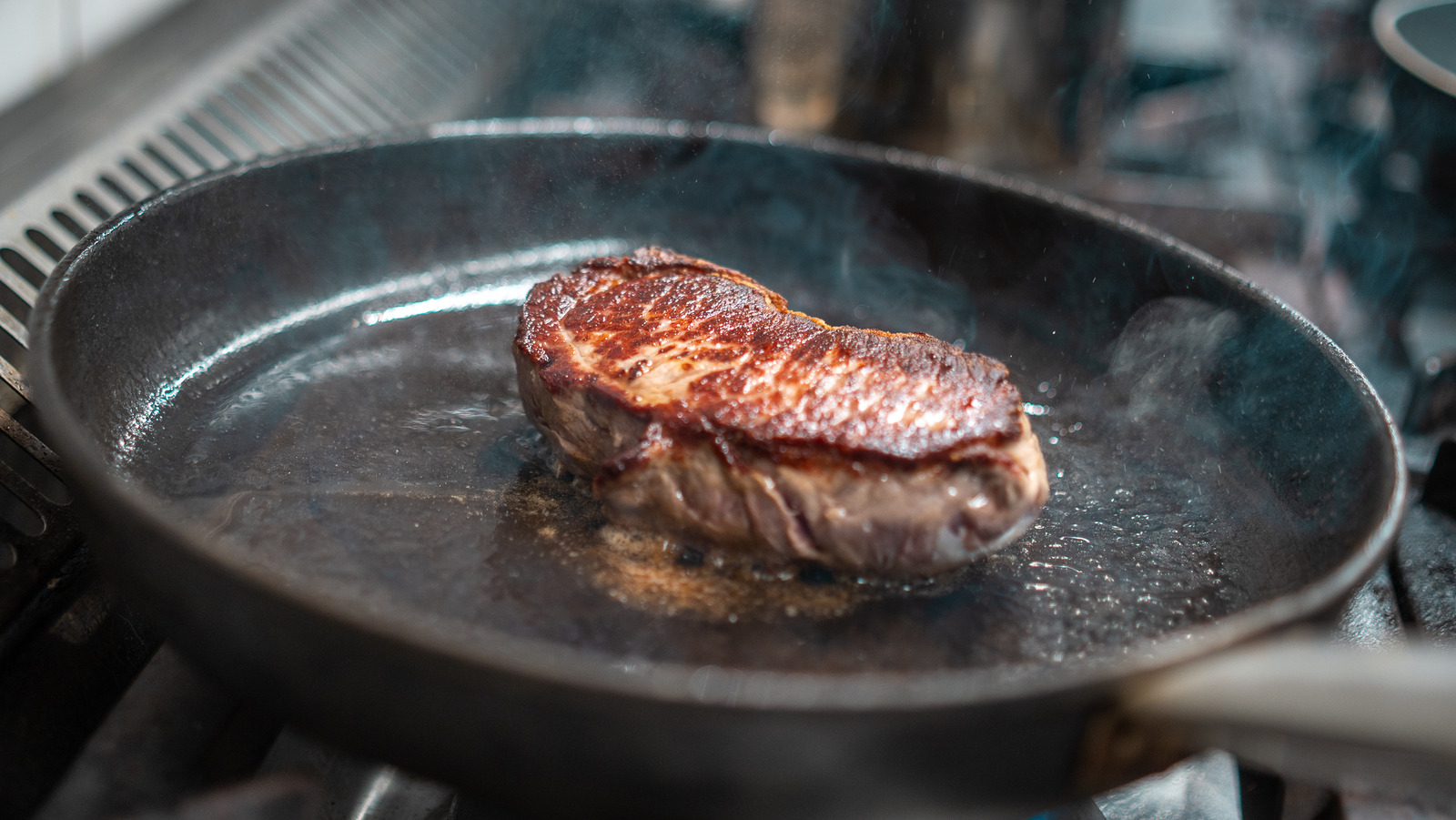
"A hot pan is important for getting a good sear on meat, vegetables, cheese, and tofu, especially if it's a stainless steel pan, but the pan likely doesn't have to be as insanely hot as you might think. To achieve a Maillard reaction, which is the delicious browning that occurs when the sugars and proteins in food are heated, you only need to achieve a temperature above 300 degrees Fahrenheit."
"The Maillard reaction is what you're looking to achieve when searing meat, not caramelization, so keeping temperatures moderate rather than ripping hot is perfect for steak and other meats. When a pan is too hot, it not only has the chance of overheating your cooking oil, but it can also lead to food that's simultaneously burnt on the outside and undercooked on the inside."
"There are other ways to ensure you're getting the perfect sear on your steak, and these tips can be carried over to other cuts of meat you'll be searing, and even fish and vegetables as well. Ensuring that the meat has been patted dry and isn't straight-out-of-the-refrigerator cold are both key to achieving a nice sear, especially on a steak, as moisture on the hot pan will create steam and inhibit the Maillard reaction."
A hot pan helps produce a good sear on meat, vegetables, cheese, and tofu, but extreme "ripping hot" temperatures are usually unnecessary at home. The Maillard reaction, responsible for desirable browning, occurs above about 300°F; much higher heat causes sugar caramelization instead. Excessive pan temperature can overheat cooking oil and produce food that is burned outside yet undercooked inside. Proper preparation—patting meat dry and avoiding cooking straight-from-fridge cold—prevents steam that inhibits browning. Moderate heat and correct preparation deliver ideal sears without the risks of excessively high temperatures.
Read at Tasting Table
Unable to calculate read time
Collection
[
|
...
]